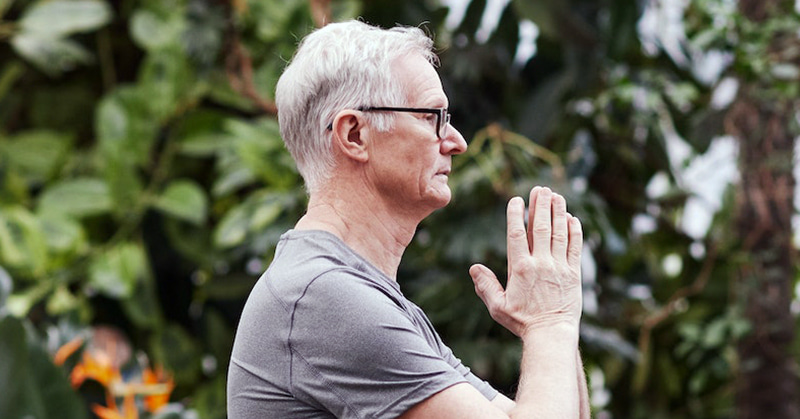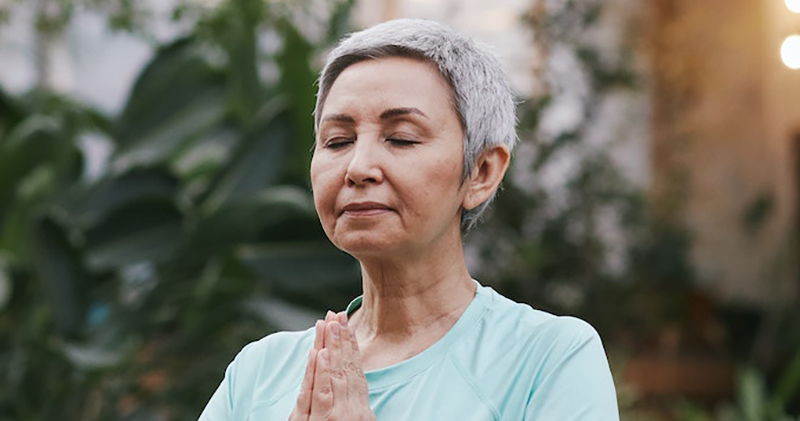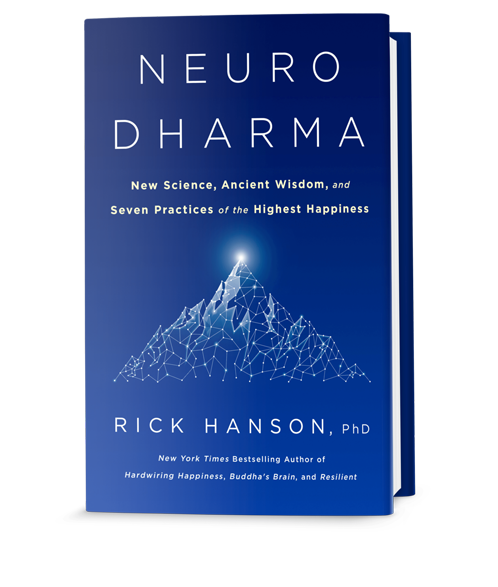RESOURCES TO GROW INNER STRENGTHS FOR
Mindfulness and Meditation
Modern life can leave us feeling frazzled and unfocused.
We can learn practical steps to take every day to become more mindful. With mindfulness, we are recollected rather than forgetful, focused and attentive rather than scattered and distracted.
Developing a meditation practice is the principal way to develop mindfulness. No matter what the day brings up, we can approach each situation with calm presence, a clear mind, and an open heart.
FREE VIDEOS
How to Cultivate Mindfulness
FREE READS
Simple Practices for Cultivating Mindfulness
Being Well Podcast Episodes
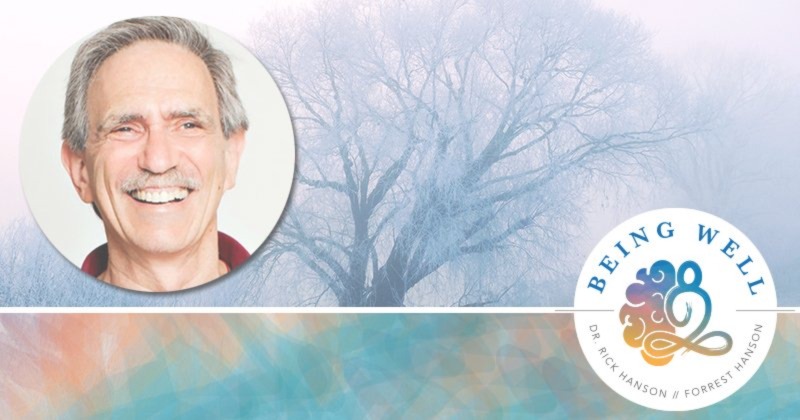
Being Well Podcast: Joy in Difficult Times with James Baraz
Today we focus on step four of James Baraz’ 10 steps to awakening joy: how to find joy in difficult times. We discuss how to balance a sense of equanimity with compassion for the suffering of the world, and how cultivating joy at an individual level can support healing at the collective level.

Being Well Podcast: Learning from Nature with Mark Coleman
Mark shares his insights and experiences from years of leading wilderness retreats, and explains how reconnecting with the natural world can deepen mindfulness and enhance our well-being.
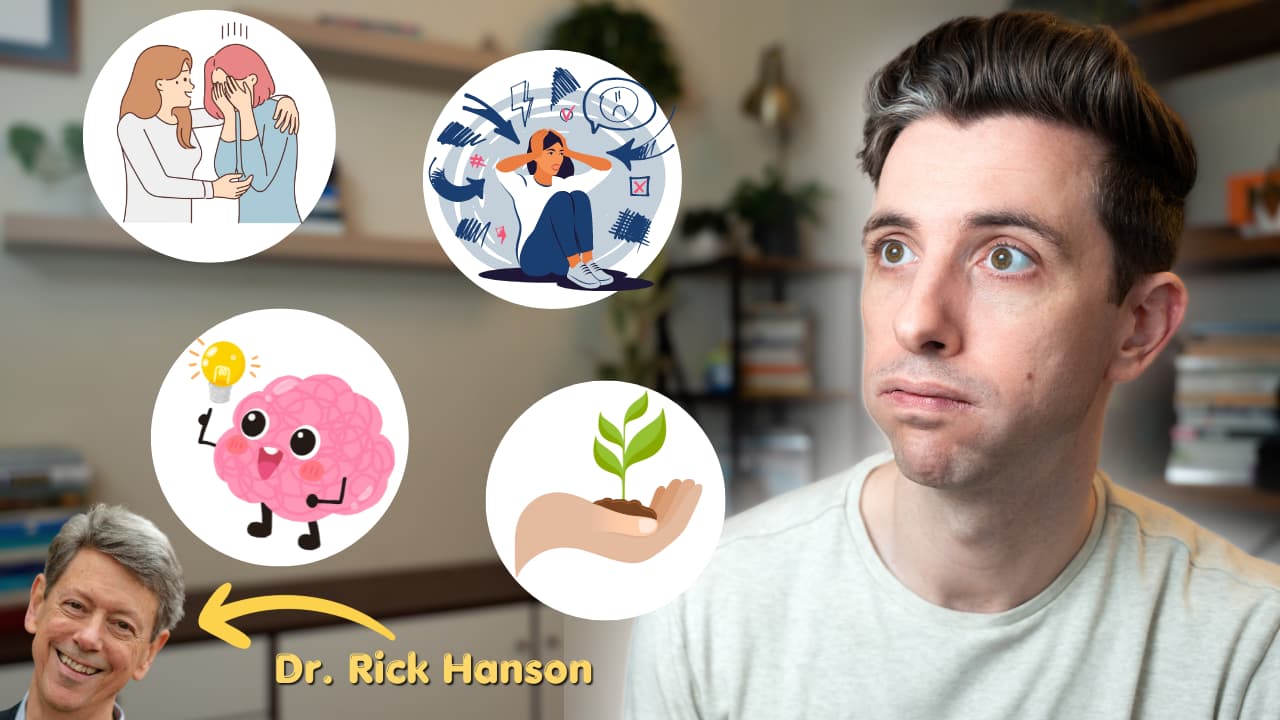
Being Well Podcast: Dealing with a Mental Health Crisis, Trauma and Meditation, and Getting Back on the Wagon: January Mailbag
Forrest and Dr. Rick open up the mailbag to answer questions from listeners. How can we understand and support someone going through a mental health crisis? Is meditation enough to heal trauma? And what can we do about family members that just won’t change?
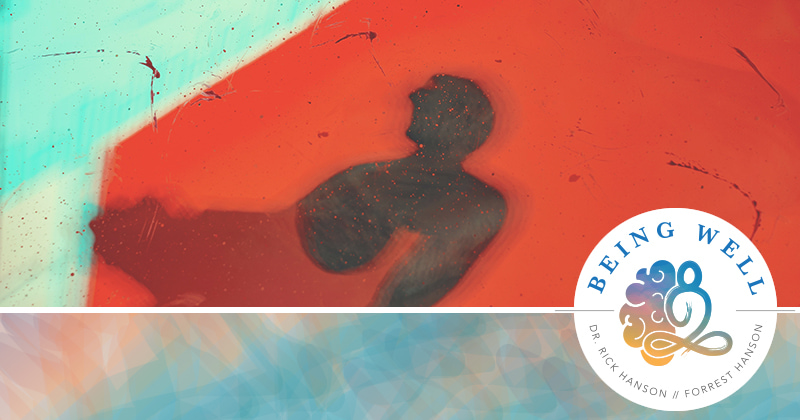
Being Well Podcast: The Unconscious Mind: What It Is and How to Use It
One of the most fascinating aspects of the mind is how most of what’s going on in it lies outside of our awareness. In this episode of the Being Well Podcast, Forrest and Dr. Rick explore the unconscious mind and the material we might find there. They talk about what the unconscious mind is, the purpose of the unconscious, repression, and what we can do to access, use, and release that unconscious material.
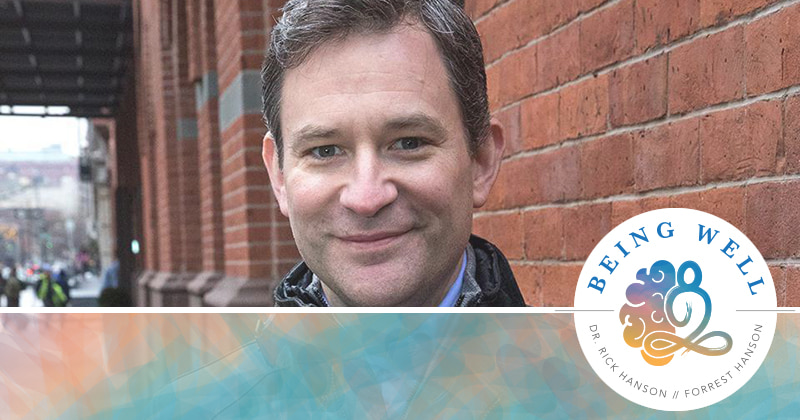
Being Well Podcast: Dan Harris: Mindfulness, Fear, and Love Without the Cringe
Dan Harris, author of 10% Happier, joins Dr. Rick and Forrest on the Being Well Podcast for a wide-ranging, open, and personal conversation. They explore dealing with anxiety and fear, sustaining a mindfulness practice, and accepting our nature while leaning into a new version of ourselves.

Being Well Podcast: Cognitive Bypassing: How to Get Out of Your Head
Cognitive bypassing occurs when we overthink to avoid feeling uncomfortable emotions like sadness, fear, or anger. In this episode, Forrest and Dr. Rick share their personal experiences with cognitive bypassing, and explore how we can step out of our heads, get in touch with our emotions, and live a more fulfilling life.

Being Well Podcast: Letting Go of Our Conditioning with Caverly Morgan
Dr. Rick and Forrest are joined by meditation teacher and former Zen monastic Caverly Morgan to discuss how we can release our conditioning, identify the inner voice that leads to change, and get to the heart of who we are.
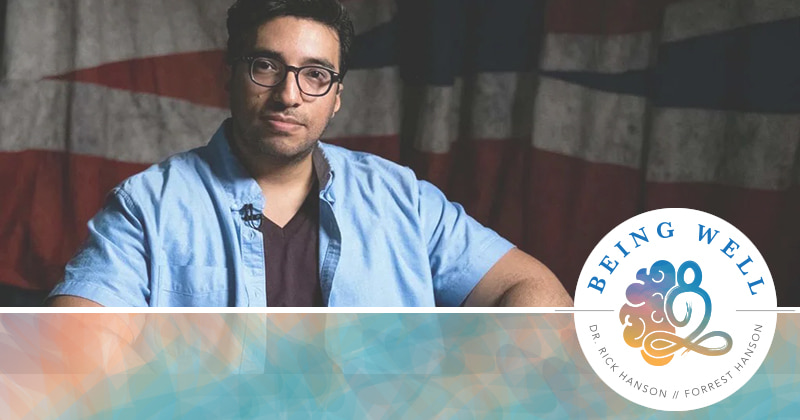
Being Well Podcast: Deepening Practice, Embracing Growth, and Becoming Lighter with Yung Pueblo
Yung Pueblo joins Forrest to explore how we can enrich our personal practice, refine the mind, break old patterns, relax the self, and feel lighter than we were before.
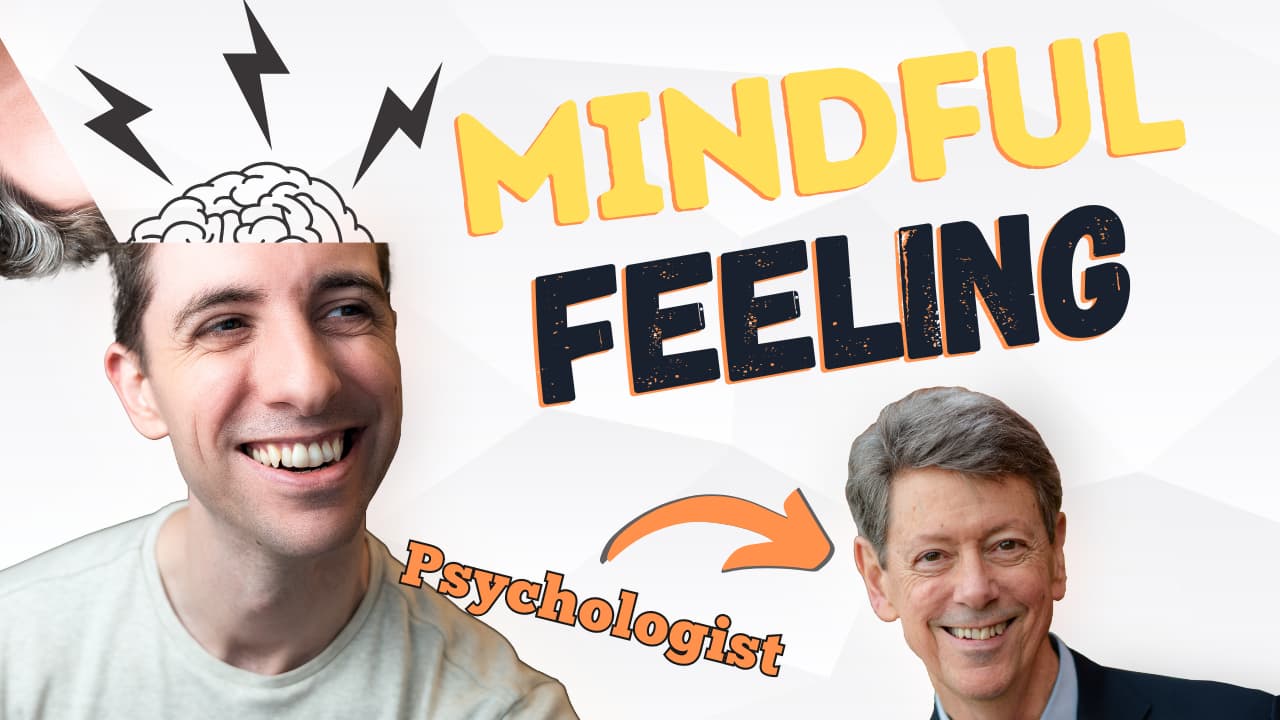
Being Well Podcast: Deeper Mindfulness with Dr. Danny Penman
Author and meditation teacher Dr. Danny Penman joins the show to explore how we can help our brain interpret the world more accurately.
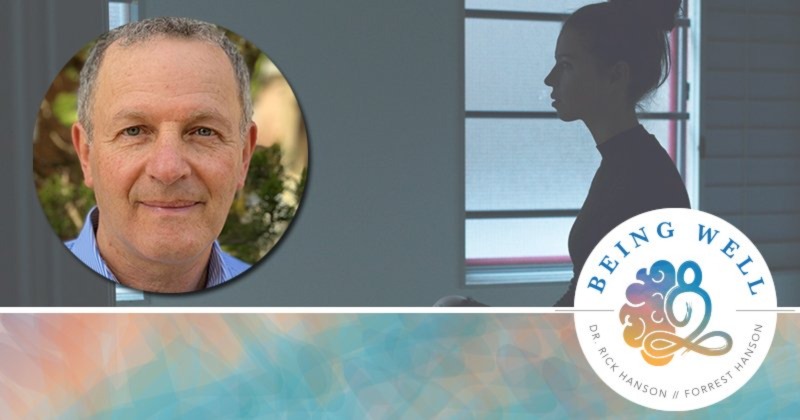
Being Well Podcast: Mindfulness for Depression with Dr. Zindel Segal
On this episode, Dr. Zindel Segal joins us to talk about Mindfulness-Based Cognitive Therapy (MBCT), an eight-week group therapy program designed to help those who suffer with chronic unhappiness and prevent relapse after episodes of severe clinical depression.

Join Dr. Rick Hanson for a free online weekly meditation, talk, and discussion. Everyone is welcome, and no background in meditation is needed. I
Dr. Hanson draws on modern psychology and brain science, as well as the penetrating and pragmatic teachings of the Buddha.
Online Course
Neurodharma
Blending Science, Wisdom, and Practice
We’ll draw on recent research about the brain as well as the deep Buddhist analysis of the mind. But there’s nothing to memorize or believe. This is a series of experiential practices, whose true test is your own direct sense of their benefits for you.
Frequently Asked Questions

Psychologist and Author Dr. Rick Hanson answers questions about
Meditation and Mindfulness
What are the names of the neurotransmitters and hormones of that are secreted or boosted when being mindful?
These are very interesting questions . . . and as far as I know there are currently very limited answers to them. In equanimity, there would be low levels of neurotransmitter activity associated with stress (e.g., cortisol and other glucocorticoids), or aroused goal pursuit (e.g., dopamine). Depending on what is also present with the equanimity, there could also be increased levels of natural opioids with sukha (happiness) and increases of oxytocin activity with metta (loving-kindness). As to “behaving mindfully,” that could mean different things depending on what the behaving is. Daniel Goleman’s Altered Traits offers a good summary regarding scientific research on meditation in particular and mindfulness in general.
Where would I find the science that forms your concept about the “Leading Edge of Now?”
From a third person perspective, one can observe that there is a continuous “when something first happens” in any material process (which includes both matter and energy), such as the moment when the bat strikes a baseball, or the position of the ball in flight at any instant of time. One can also have a sense of the mathematics of calculus related to the instantaneous position and vector of the ball. And one can have some understanding of the complex neural processes underpinning any moment of consciousness. In other words, as processes occur, there is a (metaphorical) “front edge” to them, that instant when something first happens.
From a first person perspective, one can be mindful of experiences as they appear and then change, and in their changing, how they end in some sense. Here, too, there is that instant when something first appears in consciousness. There are many studies of perception related to this. More generally, this aspect of phenomenology seems inherent and obvious, that there is an ongoing “appearing” in awareness of the next perception, thought, image, desire.
So, putting the third and first person perspectives together, it seems that both objectively and subjectively, there is a “front edge of now.” Perhaps the entirety of time has already been made and our perceptions simply “slide” along it. Nonetheless, at every moment in that sliding there is always the next thing that is encountered – as something that is happening or experienced – and that next thing is in effect the front edge of the sliding.
Check out this book for some more on the physics.
Your work is based on the idea that meditation and mindfulness can change the brain. Can you expand on this?
Actually, I’d put this a little more broadly: my work – and that of many other scholars and clinicians – is grounded in the general fact of “experience-dependent neuroplasticity,” which is the capacity of mental activity to change neural structure.
For example, researchers studied cab drivers who must memorize London’s spaghetti snarl of streets, and at the end of their training their hippocampus – a part of the brain that makes visual-spatial memories – had become thicker: much like exercise, they worked a particular “muscle” in their brain, which built new connections among its neurons. Similarly, another study found that long-term mindfulness meditators had thicker cortex in parts of the brain that control attention and are able to tune into one’s body.
In the saying from the work of the Canadian psychologist, Donald Hebb: “neurons that fire together, wire together.” Fleeting thoughts and feelings leave lasting traces in neural structure. Whatever we stimulate in the brain tends to grow stronger over time.
A traditional saying is that the mind takes the shape it rests upon. The modern update would be that the brain takes its shape from whatever the mind rests upon – for better or worse. The brain is continually changing its structure. The only questions are: Who is doing the changing: oneself or other forces? And are these changes for the better?
In this larger context, my focus is on how to apply these new scientific findings: how to use the mind to change the brain to change the mind for the better – for psychological healing, personal growth, and (if it’s of interest) deepening spiritual practice. I’m especially interested in:
How the brain has been shaped by evolution, giving us problematic tendencies toward greed, hatred, heartache, and delusion (using traditional terms) as well as wonderful capacities for happiness, peace, love, and wisdom. For example, we have a brain that makes us very vulnerable to feeling anxious, helpless, possessive, fixated on short-term rewards, angry, and aggressive. These qualities helped our ancestors survive and pass on their genes, but today they lead to much unnecessary suffering and conflict on both personal and global scales.
“Neurologizing”, the deep Buddhist analysis of the mind: what is going on inside the brain when a person is caught in the craving that leads to suffering? Alternately, what is happening in the brain when a person is experiencing equanimity, lovingkindness, meditative absorption, or liberating insight?
Using neurologically-informed methods to help overcome our ancient inclinations to fear, dehumanize, exploit, and attack “them” so that 7 billion of us can live in peace with each other on our fragile planet.
In sum, this brain stuff can sound exotic or esoteric, but in essence the approach is simple: find the neural processes that underlie negative mental factors, and reduce them; meanwhile, find the neural processes that underlie positive mental factors, and increase them. Less bad and more good – based on neuroscience and Western psychology, and informed by contemplative wisdom.
Of course, much is not yet known about the brain, so this approach is necessarily an exploration. But if we remain modest about what we don’t know, there are still many plausible connections between the mind and the brain, and many opportunities for skillful intervention for ourselves, for our children and others we care for, and for humankind as a whole.
What are the different ways we can work with our mind?
Fundamentally, in my view, there are just three kinds of ways to engage the mind, to practice with it productively:
- Be with it – Observe the mind, experience the experience, feel the feelings, etc. without trying to change anything in the stream of consciousness. Hopefully one does this with an attitude of curiosity, kindness toward oneself, and a certain stepping back – “dis-identification” – from whatever one is experiencing. One could also explore more vulnerable, fundamental, or younger material “beneath” the surface of experience, such as the hurt underneath anger or the old pain from childhood that amplifies or distorts one’s reactions. Through being with one’s experience it may change, but one is not directly making efforts to change it.
- Decrease the negative – Here is where we make efforts in the mind to relax tension from the body, vent or otherwise release emotions like sadness or anger, challenge and let go of wrongheaded thoughts, or resist or abandon problematic desires (e.g., wanting to get hammered or to yell at the kids).
- Increase the positive – Here is where we make efforts in the mind to take skillful actions (e.g., sitting up straighter to be assertive, calling the doctor for an overdue check-up), to encourage feelings like gratitude and compassion, to develop useful perspectives and other thoughts, and to strengthen and commit to beneficial desires such as exercising or not interrupting one’s partner.
In effect, if the mind is like a garden we can observe it, pull weeds, and plant flowers. In a nutshell: let be, let go, and let in.
The three ways to engage the mind work together. For example, we need to make efforts to grow capacities to be with the mind, such as self-acceptance, observing-ego functions, or distress tolerance. And we be with the results of our efforts to reduce the negative and grow the positive.
Of the three, the first one (which approximates the conventional definition of “mindfulness”) is primary. You can always be with the mind, but you can’t always reduce the negative or grow the positive.
What’s the difference between mindfulness and the way you teach engaging the mind (let be, let go, let in), and which is more experiential?
There’s definitely a place for the common advice people give to just “be mindful.” Still, it is important to do more than simply observe the mind.
What happens in the mind depends on what happens in the brain, and the brain is a physical system that does not change unless it gets changed (usually by oneself, if at all). The brain does not generally erase negative patterns simply because we observe them; if anything, its evolved negativity bias makes it retain negative learning. And the brain does not generally develop determination, compassion, gratitude, forgiveness, or most any other positive qualities simply because someone is witnessing the stream of consciousness.
Even the Buddha – someone who profoundly valued mindfulness – allocated most of the elements of the Noble Eightfold Path to the second and third ways to engage the mind (i.e., the release of greed, hatred, and delusion, and the cultivation of wise view, intention, speech, action, livelihood, effort, and concentration).
When we are bothered or upset about something, there is a natural trajectory in which we start by being with our experience. Then, at some point, it feels right to start releasing it. Then, at some point, it feels right to start replacing what we’ve released with something useful and positive. The timing of this trajectory depends on the person and situation. Sometimes you realize quickly what is bugging you, and you shift into letting go of it and moving on to something happier within a minute or two. Other times, something hits you really hard – such as a shocking loss – and it could be months and even years before it feels right to shift into letting go, and then letting in.
Some people err on the side of jumping too quickly into letting go and letting in, but if you do that, those efforts don’t have much traction. Other people get stuck in letting be, in just feeling their painful feelings, and not making skillful efforts within their own mind to release the negative and replace it with something appropriately beneficial. I would like to think that my approach balances these elements in a positive way.
Mindfulness and my work on cultivation (let in – the skillful development of inner resources) are completely complementary. One needs to sustain mindfulness for effective cultivation: to turn passing mental states into lasting neural traits (the biological basis for psychological resources). And through cultivation, one develops the mental factors that support mindfulness. Additionally, mindfulness has benefits unrelated to cultivation (e.g., coming into the present moment) and cultivation has benefits unrelated to mindfulness (e.g., developing caring for others, self-respect, gratitude, positive mood, grit, hardiness).
Mindfulness and cultivation are both “experiential” in that both of these are ways of relating to our experience. Of course, our experience includes our thoughts – both verbal and non-verbal – and one can be mindful of thoughts, can have thoughts about mindfulness, and can cultivate beneficial thoughts (such as a sense of perspective on the hassles of daily life).
What are the neurophysiological correlates of the distracting (and potentially helpful) states of mind?
Your question is deep and important – and the subject of considerable research. Check out what’s being done on the default network and mind wandering. Also see Farb’s research on the brain’s medial and lateral networks; my own take-off on this work can be found in this podcast.
A person can be in the present moment while (presently) planning the future or reflecting on the past. And being lost in reverie is not necessarily involving judging or comparing or planning. I suspect that sustained present-moment awareness primarily involves a recursive loop between the anterior cingulate cortex (for executive control of attention) and the insula (for an ongoing “map” of the body and emotions).
Can you suggest some practical strategies for beginning to cultivate a “beginner’s mind” mentality around everyday experiences?
Since the brain is a big novelty detector, looking at experiences in this way, seeing what is fresh or new about them, can really help you accelerate the encoding and installation process, and thus internalize these experiences as psychological resources, also known as inner strengths.
To support this sense of freshness, you can imagine looking at the world through the eyes of child. Or adopt the attitude of “don’t know” mind – not “duh” mind – by disengaging from the internal commentary that labels and judges things, by allowing yourself not to be so sure about everything, by disengaging from your views, and by coming more into the body and less caught up in conceptualizing and abstracting. You could also engage the world and your experience in an adventuresome, playful, exploratory way . . . looking for new things, new aspects to familiar experiences. How fun!
If someone let's go of the negative thoughts in their brain and actively takes in the good, it seems that could be the same as running away from negative feelings in the mind/body, which is counter to mindfulness. Thoughts?
My take, with a bucket of salt:
- Mindfulness is a means to an end, not an end in itself.
- Mindfulness itself is sustained attention to something, typically with some meta-cognitive awareness of the quality of one’s attention. Mindfulness itself is morally neutral. A burglar could be very mindful. If people want, they can add other qualities to the mindfulness, such as an attitude of acceptance and friendliness toward the objects of attention, such as toward whatever may pass through the mind.
- Mindfulness itself does not try to change the objects of attention. But mindfulness is not necessarily the only thing happening in the mind! If one likes, one could add some effort, hopefully wise, to change the objects of attention. A person could be mindful of her stress and negative thoughts for a while; then she could both be mindful and make an effort to shift what is in her mind; finally, she could be mindful of the results of her efforts.
- As you can see, a certain set of presumptions have grown up around mindfulness in the past few decades that actually are additions to the original idea, notably the original idea promoted by the Buddha 2500 years ago. In particular, people talk as if an explicit stance against working with the contents of awareness is innate feature of mindfulness, and it is not. I recommend ready my paper, the Noble Eightfold Path for more on this.
- Mindfulness itself is always helpful. And sometimes it is useful for a person to drop any effort to shift contents of awareness in any direction whatsoever; sometimes this kind of “choiceless awareness” alone helps negative thoughts release.
- But often mindfulness alone is not enough. A lot of crud fills the mind, and it persists because the brain is a physical object that does not tend to change unless something changes it (in effect, Newton’s First Law). When you appreciate how embodied we are, and how much the brain is a learning organ that builds structure that it maintains unless it is actually changed, you get very interested in effective and efficient effort. Since neurons that fire together, wire together, keeping negative material in awareness can actually deepen its hold upon you.
- In essence, there are two great elements in psychological healing, everyday well being and effectiveness, personal growth, and spiritual practice: being with and working with (in Buddhism: Right Mindfulness and Right Effort). These are the two great wings that help us fly. Each wing has strengths. And the wings work together: mindfulness improves our efforts, and it takes skillful effort to be stably mindful.
- Then you can make a free and wise choice, moment by moment, as to what will do the most good for oneself, or one’s client: lean toward pure mindfulness, or lean toward mindful efforts. Both are beautiful, and help us fly.
How do you teach mindfulness for the first time to a general audience of adults?
If I am introducing mindfulness to a general audience, I am very matter-of-fact about it, unapologetic and undefensive, and use concrete, scientifically-tinged language. I speak of experience-dependent neuroplasticity, and therefore the critically important role of regulating attention as the first step in shaping the brain for better rather than for worse (given its negativity bias). This part takes me 2 minutes or so. Really. Simpler and faster is better.
Next I introduce the idea of sustained present moment awareness – the definition of mindfulness – as both an excellent training in attention regulation and an excellent practice in its own right.
Then we begin the practice, first seeing if they can sustain attention to the sensations of breathing – around the nose, or in the chest or belly, or in the body in general – for say 10 breaths in a row. (I always also state that other objects of attention are fine, such as a word like “peace.”) I could make a few comments about steadiness of mind, and remaining attentive to their own attention: meta-cognitive awareness of awareness. I might also gently suggest finding a posture that is comfortable and alert.
On the basis of the steadiness of mind established in this way, at some point – a few minutes in – I suggest that they remain aware of their object of attention while also staying present in this moment, and this one. Not resisting the thoughts and feelings and sounds etc. that come and go, just disengaging from them. Simply be-ing, gently relaxing, opening, softening . . . without strain or stress, opening into a growing well-being and peace . . . a kind of space or underlying quality of being that contains any pain or upset.
Usually we stay pretty quiet, though sometimes with a comment here or there by me to help draw people back into the practice.
And then we finish up. Gradually drawing people back into the room, opening their eyes if they’ve closed. Registering what the experience is like, and letting it sink in.
When talking with others I’m very focused and mindful of the topic, but not of my conversation partner’s experience. Any recommendations?
Traditionally, mindfulness is defined essentially as sustained present moment awareness of everything in the field of experience. You are present rather than absent, recollective rather than forgetful.
In this light, we can be in flow while also being mindful, but the metacognitive aspects of mindfulness – a little bit of paying attention to attention, aware of awareness, to remain mindful – do tend to pull people out of flow unless they develop the capacity to integrate flow and mindfulness.
In your case, you might explore what it is like to be really passionate and engaged, including intellectually, while also continuing to keep a bit of awareness for the overall situation, including the reactions of other people.
What happens with mindful eating?
Mindful eating would naturally down-regulate stress activation plus increase experiences of fulfillment and satiation that would reduce craving and thus suffering – of course via the various neural substrates of these mental processes.
The primary identified neural correlate of mindfulness – defined as sustained attention to something, typically with a meta-cognitive element of awareness of awareness (i.e., the Pali term for mindfulness, sati, has its root meaning in “recollectedness”) – is activation of the anterior cingulate cortex (ACC) and related PFC executive control circuits that manage the deliberate control of attention. The term mindfulness sometimes is reduced to choiceless awareness, which is a common but serious error; choiceless awareness is simply a stance toward the stream of consciousness, and one can be mindful of both that stream and the stance much as one could be mindful of one’s golf swing, the flicker of expressions on the face of one’s partner, or what happens in the mind when one eats slowly and with focused attention. When mindful attention is applied to eating, it’s very plausible that the insula would be activated, which handles interoception.
Mindful eating would plausibly affect the body by:
- Down-regulating sympathetic nervous system and hypothalamic-pituitary-adrenal axis activation, along with their related stress hormones; get benefits of less allostatic load
- Up-regulate parasympathetic activation; benefits of relaxation
- Strengthen ACC and related PFC circuits; benefits of improved attentional control and executive functions
- Strengthen insula; benefits of improved self-awareness and empathy for emotions of others (insula does both)
- Increase signaling to hypothalamus of visceral rewards received; benefits of reducing wanting and craving
Do you think the popularization of mindfulness has had any negative consequences?
When talking about “mindfulness,” I draw on the traditional meaning of that term: sustained present-moment awareness. I believe that two unintended but significant mistakes have crept into the ways that many people think about and talk about mindfulness these days.
First, mindfulness is often taken to mean simply self-awareness. But mindfulness is sustained awareness of both the inner and outer worlds, both one’s experience and one’s environment. Driving in a busy freeway, I am mindful of both my inner anxiety as well as the big truck weaving back and forth next to my car.
Second, mindfulness is often described as simply observing, so that anything but observing is considered to be an obstruction to mindfulness. But actually, mindfulness is to be present in all three ways to engage the mind. For example, we need to be mindful of the process of cultivating the positive and of releasing or preventing the negative. And when we just be with the mind, mindfulness must be present alongside other factors such as intention or self-compassion. Making efforts in your mind is not an obstruction to mindfulness or at odds with it. In fact, we need to make efforts in the mind to grow resources for mindfulness (such as concentration).
Of course, these two mistakes about how mindfulness is frequently described and even taught these days do not mean that there is anything wrong with mindfulness itself. Mindfulness is wonderful! But these mistakes have had negative consequences that I have observed and others have described to me:
- Encouraging a passivity with regard to one’s mind
- Over-focusing on one’s experience, one’s inner life, and under-focusing on one’s environment and the real-world problems in it
- Assuming that beneficial mental qualities like compassion, self-compassion, or resilience are somehow inherent in mindfulness itself so that they will grow on their own if someone just practices mindfulness
- Assuming that negative qualities like feelings of inadequacy, anxiety, envy, or anger will just fade away if someone just practices mindfulness
- Arguing against or otherwise resisting the idea of making skillful efforts inside one’s mind as “dualistic,” “goal-directed” (hm, what’s inherently wrong with being goal-directed?), or “egoic”
I have never really understood what is meant by mindfulness.
This article is thoughtful and thorough, and makes good points, sort of like your dentist having you sign a form acknowledging the risks of getting a cavity filled.
This said, in general, both formal and informal evidence is that for most people, the benefits of mindfulness vastly outweigh the risks, which are next to nonexistent for a typical, reasonably balanced and integrated person.
If an individual is fragile for whatever reason, or has a significant trauma history that could bubble up, or is prone to peculiar or even psychotic mental processes, then that person should be cautious about using mindfulness in everyday life to explore or “uncover” the murky depths of their psyche, and very very cautious about intensive practice in a workshop or meditation retreat. Most of the examples of mindfulness being problematic involve fragile people in intensive practice. It’s a little like having a fragile knee: maybe it’s fine to use it for a walk in the park but don’t go skiing moguls.
If spooky thoughts or other material bubble up as someone opens mindfully into themselves and it gets overwhelming, many people are readily able to “change the channel” by opening their eyes, going for a walk, eating a cookie, talking with a friend about it, etc. Of course, be reasonably cautious, etc.
Also, “mindfulness” is often equated with and reduced to only a probing inquiry into oneself, but mindfulness simply means sustained present moment awareness applied to something, which could be the whole of a person’s consciousness, the focused sensations of breath at the upper lip, the play of emotion over the face of a friend, or the big truck driving next to you on a rainy highway. Just because the use of mindfulness in a certain way (e.g., deep meditation) could have risks for a certain person doesn’t mean that person would not be benefitted by using mindfulness in other ways.
I have a hard time keeping up with a regular mindfulness practice. What would you suggest to help someone persist in practicing HEAL?
Three nice things about HEAL:
- It’s usually quick and in the flow of everyday life, a dozen seconds here and half a minute there, a few times a day, helping good learning land and stick to your ribs.
- It’s usually enjoyable, since – remarkably – most psychologically beneficial experiences are enjoyable. We have evolved rewarding associations to them because they actually help us survive to pass on our genes, in addition to all the benefits in terms of quality of life. These experiences feel good because they are good for us and others.
- HEAL makes real changes in your brain, which is motivating to know.
So I find that using HEAL becomes pretty natural for people, like any good habit. If you’re a mental health professional you can do things with clients to encourage them to focus on key resource experiences between sessions, or simply put little reminders around them like doing HEAL at specific times such as at meals or just before bed or just after exercising or meditating.
As to regular mindfulness practice, you can use HEAL to internalize the experience of mindfulness so it comes more easily and you get better at it – just like internalizing the experience of any other inner strength, to grow it inside yourself. Similarly, you can use HEAL to internalize the benefits of mindfulness – or related practices such as meditation – so you get more motivated to practice as you experience its rewards.
Also, try making a commitment to meditate – which could include for a person the theistic version of contemplative practice, which is prayer – at least one minute a day.
Why is being better than doing?
I keep trying to remember (as a major do-er myself), that it is in “being” that we usually find our deepest, most reliable refuge and refueling station – including when we rest in some sense in being as we engage “doing.”
As to those who are struggling in this world that we cannot concretely help, to me it’s important to have compassion and to bear witness and to be a stand for justice: I have faith that this is worth being and doing in its own right, and faith that in ways largely unknown this will in fact be concretely helpful somehow some day.
Is gratitude beneficial as a spiritual and/or mindfulness practice in and of itself?
Gratitude supports spiritual practices – or related secular ones, such as everyday mindfulness – in a variety of ways. It draws our awareness to a sense of fullness, of having enough, and this reduces the craving and clinging that lead to suffering and harm towards oneself and others. It is a doorway to awe and wonder at the stunning fact that the universe exists at all. It helps you appreciate the extraordinary gift of being alive and of having a human life, so you want to make the most of it and don’t want to waste it. And for some, gratitude draws them toward an appreciation for God – however they experience or conceive of that.
Of course, each of these benefits also gently and gradually shapes one’s own brain in an increasingly positive direction.
How does being-awareness relate to our underlying animal nature?
For me an underlying truth or theme is surrender, humility, and opening out into our animal nature node in a vast net of causes. One of my favorite practices is to soften, opening into the body in which the inner lizard, rat, and monkey long to feel safe, fed, and loved but are primed by mother nature to doubt and seek in order to survive and pass on genes – even though they are actually already truly safe fed and loved. This means that they need lots and lots of experiences of fullness again and again for the sweet truth to pass through Mother Nature’s well-intended veils of delusion and into their lying brain.
Is bad science driving the popularity of mindfulness meditation?
It is widely recognized in mainstream medicine that roughly half of all medical procedures (including “off-label prescriptions”) performed routinely in in-patient and out-patient settings lack a single study substantiating them. This does not mean they are bad medicine; they are considered part of the reasonable standard of care. In the well-known saying in science: “absence of evidence is not evidence of absence.”
The evidence for most healthcare interventions, including routine medical practices, is nonexistent, limited, shows mild benefits at most, or could be questioned methodologically. In this context, check out this link.
As you can see in this link, the evidence for mindfulness and related practices (e.g., meditation) for promoting mental and physical health is quite robust. If Pfizer or Merck could patent meditation, based on the research findings already, we’d regularly be seeing ads for it on primetime TV.
There is a kind of pocket industry of debunkers who make their bones trying to taking down interventions that have any kind of holistic, new age, or spiritual air about them. It is so easy to debunk things. You can debunk nearly anything. You can always find fault with academic papers. You can always call for more evidence. So let’s call for more evidence in domains with big risks instead of tiny ones.
Meditation is free or inexpensive, has rare (but occasional, as Willoughby Britton’s research has found for some vulnerable people going into intensive meditation retreats) negative side effects, and can be done in many kinds of settings by many kinds of people in many kinds of ways. Its benefits, and the evidence for its benefits, should be netted against its very low risks; the higher the risks, the higher the need for evidence for an intervention, but the lower the risks, the lower the need for evidence for an intervention. About 200,000 people die each year in America due to medical error. If you participate in medicine, there are significant risks, I don’t say this to criticize medicine – I value it highly and am grateful to my doctors – but to put this issue in context. How many people die each year due to participating in meditation? The risks are tiny.
Sure, we should be careful about over-claiming about the evidence for anything. But I rarely see that. Mostly I see people saying essentially that meditation could help you become more self-aware, lower your stress, and grow calm and other resources inside yourself, and these psychological developments couldn’t hurt your health and might even help it through the stress reduction pathway. You know, this statement is accurate when applied to the majority of people who take up meditation.
Can you suggest something to help me breathe mindfully?
Many people have difficulty using the sensations of breathing as an anchor for their attention during meditation, or even generally. Sometimes it is because body sensations in general or breathing in particular have gotten associated with painful, even traumatic, experiences. Other times there’s no trauma history but something about the breath just doesn’t work for a person.
No worries, actually: in meditation, the point is not the object/anchor of attention, the point is the quality of sustained presence of mind moment after moment – along with related helpful factors such as self-compassion, acceptance, and learning along the way from one’s experiences. So you could shift to any number of other, often common, objects of attention, such as a word or phrase (e.g., “peace,” “may we be happy,” “om”), an image (e.g., a candle, a picture of a saint, a memory of a beautiful meadow), or sensations in other parts of the body. And you could also do meditation while walking slowly.
If you still want to explore breathing, what I do is have a general awareness of my torso and whole body while breathing rather than focusing on any particular spot, and without trying to regulate breathing in any way. Move out to the body as a whole, and let the sensations of breathing come to you as it were, receiving them without effort.
Meanwhile, there is a natural relaxation, letting go, warm-heartedness, and growing sense of well-being, contentment, and peace.
I would like to have your perspective on some recent studies on the negative effects of mindfulness meditation.
There are indeed a few cautions about meditation for a few people. If someone is already really vulnerable and unstable, an intensive meditation retreat is probably not a good idea. This is why the meditation centers I am most familiar with (Spirit Rock in California and IMS in Massachusetts) try to screen out people like this. If someone is prone to manic episodes, don’t aim for intensely blissful experiences. If a person is already depressed, just sitting with themselves for many hours of silence each day is probably unwise.
As far as I know, these are the basic cautions. They apply to a tiny fraction of the people who meditate, and a tiny fraction of the settings in which they meditate. If someone is in that tiny fraction of people, be very cautious about prolonged and intensive retreats – and be careful about meditating on your own at home.
As best I can tell, the rest is media drama – essentially saying, by analogy, people with vulnerable legs shouldn’t run marathons. Wow, breaking news.
Just observe your own experience. If your way of meditating is working for you, great. If not, modify it or stop it. Use common sense.
Does mindfulness mean being submissive?
When we sustain a mindful awareness of outer events or inner experience, we are actually doing the opposite of submitting to them, in the sense you mean. We are recognizing them as facts – like them or not, they exist – perhaps with a sense of acceptance or serenity, but not letting them control us.
In fact, when we fight with them – like getting angry at having certain thoughts – they are controlling us. And, with the perspective and wisdom that come from awareness and investigation, we can be strong, forceful, even passionate in speaking truth to power – both out there, and (often more importantly) inside our own heads.
What we let go of mainly are our unhelpful, unhappy reactions to things. We don’t let go of recognizing and standing up against injustice, or let go of our legitimate interests.
The main things that take advantage of us are our fearful, angry, self-doubting reactions to things.
Check out my chapter on kindness and assertiveness in Buddha’s Brain, or the Relationships topic, and see what you think.
How to you balance equanimity and cultivation?
These are deeply important questions. We cultivate compassion along with equanimity, keeping the two in balance. Equanimity is the frame of our experiences, so we can experience anything in principle with equanimity (though calm pleasure is easier to maintain equanimity for than enraged pain!) . . . including heartbroken compassion. And as to trying to influence others wisely (as the Buddha did in many ways, including through his teachings and exhortations), that, too, can be done with equanimity . . . . and then those others do what they do, which we can also have equanimity about.
All this is a cultivation, a path, a process over time, of course.
How can meditation be used as a tool when people are suffering from basic survival issues?
This is a deep, vital question. My own take is that mindfulness itself does not, will not, solve social problems like poverty and racial injustice. We need to do other things as well (and I’ve sure got my own opinions about that, including voting).
People can also use related practices such as meditation as way to avoid dealing with real issues of all kinds.
This said, mindfulness practices can help people develop the inner stability that fosters greater resilience for dealing with whatever they’re facing. And as one’s personal well-being improves at least a little, sometimes their view can widen and see more clearly the problems around them, and feel more resourced inside to be helpful to others.
What is this awareness really? What is the sole purpose of mindfulness?
My book Neurodharma speaks to much of what you raise. In a nutshell, what’s helpful is to establish a fairly stable mindful awareness of your inner and outer world, which simply means being present much of the time, with related qualities of acceptance of your experiences and supportiveness (e.g., self-compassion) toward yourself. This is a realistic goal. It’s OK to daydream and ruminate from time to time…just not all of the time!
Awareness is the field through which experiences pass. Over time, as practice deepens, there is a growing sense of being this space in which experiences occur, while holding all experiences more and more lightly, aware of their ephemeral nature. This will come naturally. And we can deliberately practice this sense of abiding aware, allowing experiences to come and go, in specific meditations.
Then there is the classic notion of a transpersonal “cosmic” consciousness that transcends the individual awareness of people…and cats and dogs and lizards and who knows spiders as well. Teachers and writers sometimes blur and therefore confuse the distinction between individual awareness – being aware of stimuli is a biological property of animals with a nervous system, which does not mean they are self-conscious like humans – and this possible transpersonal, transcendental awareness.
Clearly there is the natural process of awareness – aware-ing? – in you and me and cats and squirrels, and there may also be a transcendental awareness/consciousness. And perhaps these two shade into each other in the depths of our being.
Meanwhile, there is always the next step to take, whatever it is. That’s worth focusing on, for all of us. Other books you might like are Diana Winston’s The Little Book of Being and Jaimal Yogis’s Saltwater Buddha.
And of course, keep going!
What the definition of Vipassana meditation?
The short answer is that vipassana is recognizing the nature of all experiences and most of physical reality as made of parts that are connected and changing, and thus empty of absolute identity and self-creating existence. Thoughts and things exist . . . interdependently and emptily. The most radical and far-reaching vipassana releases the sense of self and craving and suffering.
Vipassana is aided by shamatha, the development of steadiness of mind, including through Right Concentration and the jhanas. The two support each other.
There is more there about all this in the Steadying the Mind chapter of Neurodharma?
I am struggling with a deep inner flaw or behavior that stops me from really being able to meditate or even make a change in my life. How do I wash my hands clean of the blood?
When we feel ashamed, guilty, or remorseful about something, that is understandably upsetting, and disturbing to meditation. You may know that one of the five “hindrances” to practice identified by the Buddha is commonly translated as “restlessness and remorse.”
Dealing with that, let’s say, remorse is on another track than meditation. I’ve written about this in the last chapter of Resilient, related to self-forgiveness. As we come to a genuine inner peace about whatever has happened, then meditation (as well as many other good things) can progress in one’s life.
If meditation practice benefits our lives, but we get wonky feelings while meditating: 1) What kind of sensations are to be expected and how do we recognize that they are safe? As you know, there is also research data of adverse effects of meditation. 2) If those sensations are normal, how should we work with the feelings that arise from them?
When, in our practice, we lose a sense of having boundaries around our individual body, how might this be different from dissociation? Are there clear experiential differences, and/or measurable differences in brain activity between the two?
It’s really important to differentiate between the two, including as related to some “adverse experiences” that occasionally occur in meditation, particularly while on intensive retreats.
In clinical psychology, “dissociation” generally means a state of consciousness that may be adaptive during specific traumatic events or to get through a very difficult time (e.g., childhood with an abusive mother), but otherwise is problematic in the ways that it is numbing, with decreased executive function and coping, with less mindful presence, and with little or no sense of emotionally positive well-being.
In meditation, and in practice altogether, we can have a growing sense of, say, “a softening of edges, opening into everything, knowing you are lived by everything” while also having a sense of well-being, a continuity of mindful presence, and a sustained capacity to respond skillfully to events as needed. This is not dissociation in the clinical sense.
I’ve written about ways that someone who is vulnerable to dissociation can remain grounded and present even as they move into the deeper waters of meditation. For example: staying aware of the internal sensations of breathing, while from to time touching into the sense of being alright right now and with a warm heart. And if one likes, moving a little or even doing walking meditation.
Is there a recording available of a guided meditation for your HEAL framework?
In the Foundations of Well-Being the Learning Pillar has several practices that cover the steps of HEAL. Here are the links of the audio for those:
- Noticing and Creating Beneficial Experiences
- Enriching and Absorbing Being Loving
- Taking in Key Resource Experiences
- Practice of Linking
Also, I have extended guided practices in the audio version of my book, Hardwiring Happiness, that you might like (chapter 10 is pretty much three chapters worth of guided practices).
How do we know that our daily practice is 'working' and how does one measure such a thing?
This is a really important question. I have written briefly about this, but most of my content can be found as part of various talks and presentations. You might like a talk I gave – The Essence of Mindfulness, the Foundation of All Inner Practice – that you can find here.
I think there are two key parts to practice:
- Disentangling from the conventional suffering-saturated strategy for happiness, which is ultimately doomed.
- Opening into that which is a reliable basis for lasting true happiness.
I have been served by various Tibetan sayings:
- In the beginning nothing came; in the middle nothing stayed; in the end nothing left.
- In the beginning nothing came; in the middle nothing stayed; in the end nothing left.
- Gradual cultivation, sudden awakening.
- Moments of awakening, many times a day
- If you take care of the minutes, the years will take care of themselves.
I also try to operationalize “working.” Is the heart becoming more open, are we increasingly able to “cling to nothing in this or any world,” are we becoming more accessible to unconditionality, are we becoming more contented, loving and peaceful?
Can MBSR really be labeled as mindfulness meditation if it only relies on the sustained present moment awareness and not without the old theories of awareness?
You are very wisely raising a key question that is actually quite controversial.
When taken by itself, there is considerable research evidence for the benefits of MBSR in particular and of related secular trainings in mindfulness (defined as sustained present moment awareness, typically combined with qualities of self-acceptance and curiosity). This research is credible and a sound basis for applications in the settings you work in. So, from a secular perspective, things seem clear. MBSR is not Buddhist any more than self-awareness, attention training, self-acceptance, or meta-cognition are Buddhist. If someone says, “We can’t teach mindfulness since that is Buddhist,” I politely tell them that this is mistaken: the Buddha in particular and Buddhism in general has no monopoly on mindfulness, compassion, taking personal responsibility, insight, or kindness even though these are central elements of Buddhism.
But, from a Buddhist perspective, some people (such as Jon Kabat-Zinn and other respected teachers) think it is fine to extract elements of Buddhist practice (e.g., mindfulness) and then apply them outside of that Buddhist context, while other respected teachers think that this is wrong to do. Myself, I side with Jon on this question.
What is the best time of the day to meditate?
In all the studies (and reviews of studies) I’ve seen on meditation, I’ve never seen anything scientific about best time of day to meditate. Maybe it exists, but I’ve never heard of it.
From the standpoint of a long-time meditator, plus someone who teaches meditation, my practical answer is this: the best time to meditate . . . is whatever time you will actually do it. It’s a variation on the old line that the best exercise in the world for you is whatever you will actually do.
This said, there is science that the mind is quieter for most people when we first awaken in the morning, plus we are less likely to fall back asleep, so that is an easier time to meditate. Additionally, meditating in the morning lays a good foundation for your outlook and mood for the whole day. (And as a practical matter, if you meditate before the kids get up, if you have any, the house is still quiet.)
Science also shows that just before sleep, the mind and brain are very receptive. In this hypnagogic state, the influence of meditation is going to be high, with results that could ripple through the night. The tradeoff is that we are less alert since we are sleepy.
So perhaps the perfect combination is have your main meditation in the morning (however long it is, even just a few minutes), with a minute or more just before sleep.
But remember, no matter what the scientists say, the best time to meditate is the time that works best for you.
How do I reap the brain benefits of single-minded focus for five minutes?
When we try to open to, encourage, evoke, kindle, call forth, etc. a positive mental factor during meditation – e.g., relaxing the body, feeling more protected and thus safer, finding some well-being even happiness in awareness, feeling a sense of spaciousness in experience – you’re right there is a focusing of attention on that factor. In the background of awareness there may also from time to time be a sense of body sensations, perhaps those of breathing, but there is no attempt to be simultaneously and equally aware of both the breath and the positive mental factor: that is a difficult if not impossible balancing act and stressful to attempt as you have experienced.
Then, after the mental factor has been activated, we can either make it the object of focused attention or shift to the breath (or something else, such as a saying like “may beings be at peace”). If you are working on steadying the mind, a good focus especially in the beginning and intermediate stages of meditating, then you would probably give yourself over to the sensations of breathing, abiding as a body breathing, with from time to time a passing but beautiful sense of relaxing, the mind quieting, peace growing, opening, being here, being now. Pretty sweet!
What can I do if I get flooded with thoughts or painful feelings, even traumatic ones, when I try to meditate?
It’s important to build up inner resources for meditating. Buddha’s Brain focuses on inner resources, especially the fourth chapter on taking in the good.
A quick suggestion would be to find something that is reliably comfortable and peaceful in your experience – such as the breath, or an object of beauty, or a saying – and use that as your meditation anchor. Maybe while standing or walking, to reduce the dissociation. And keep disengaging from painful thoughts; don’t fight them, ignore them. And from time to time look at them categorically; in other words, see their nature, the nature of all experience, all phenomenology: transient, made of parts, arising and passing away due to causes, insubstantial, an unreliable basis for lasting happiness; seeing them in this way, they have less weight.
Do you think playing computer solitaire fulfills the goal of mindfulness and meditation?
Well, with all the respect in the world for your mother – and as someone who works with children and routinely says that a mother’s intuition is gold – I’ve got to come down on your side here.
Sure, the “circle” of mental activities – and thus the neural processes and gradually building of neural structure – of meditation overlaps the “circle” of these while playing solitaire on the computer (or playing other games in other ways), but there is a lot about each circle that is distinct from the other one.
Game playing will strengthen intellectual and other cognitive capacities (e.g., visual processing, perceptual analysis) that meditation will not.
On the other hand, meditation will building other capacities, such as strengthening attention (because of the relatively non-stimulating nature of breath sensations or other common targets of contemplative attention), the capacity to disengage from mental processes to observe them peacefully rather than getting swept away in chasing mental carrots or dodging mental sticks, and insight into both personal psychological material (e.g., the hurt lingering underneath resentments) and the general nature of mental phenomena as transient and usually not worth getting one’s knickers in a twist about. Plus meditation confers many other benefits, including stress reduction, managing anxiety, and reducing the distress and sometimes symptom intensity of many medical conditions. (Check out this slide set from a workshop I gave to psychiatrists for more on this.)
While intellectually stimulating activities such as game playing have been shown to help protect against cognitive decline with aging, preliminary studies have also shown that religious and spiritual activities (which include prayer and meditation – though a person can meditate outside a religious frame and still get most if not all of its mental and thus neural benefits) also offer protections against cognitive decline, here too through overlapping “circles” of factors.
Bottom-line: I say do both! Have fun with solitaire, and find some contemplative practice that suits you. If you like, commit to meditating at least one minute a day, even if it’s the last minute before you fall asleep. And like many things, there is a dosing effect: the more meditation you do, the better for your brain.
Can you help clarify how to work with negative thoughts in meditation?
For negative thoughts during meditation, the two classic strategies are:
- Open awareness (sometimes called vipassana though that’s a misnomer since vipassana means insight which can be present during many modes of meditation and daily life, and insight can be absent during open awareness) – Allow negative thoughts to come and go, observe them without reaction, ground more and more deeply in relaxed awareness/beingness/well-being.
- Focused attention – Pull attention firmly away from anything other than the object of concentration/absorption (e.g., the breath). Negative thoughts may persist but dimly outside the field of concentrated absorption.
The batting away strategy is a detail for the focused attention approach. Sometimes when the mind is quiet we can see distracting thoughts starting to arise and congeal, and we can gently bat them away before they fully “invade the mind and remain” (as said by the Buddha).
It is also possible in meditation, in an open awareness frame, to use the meditative state to investigate negative thoughts to sense down into deeper, warmer, more emotional layers, as you say. The art in doing this is to avoid therapizing oneself and getting all caught up in self-analysis, but also try to get to the bottom of things. Check out the RAIN Method that Tara Brach, James Baraz, and others talk about.
If negative thoughts are overwhelming if you let them in, perhaps best in meditation to focus on concentration methods, and outside meditation engage practices like RAIN.
How is paying attention to exhaling distinct from extending the exhalation?
During exhaling there is an uptick in parasympathetic activation due to increased vagal inhibition of the sympathetic nervous system, which lets the heart slow down. So increasing the duration of the exhale would naturally increase relative parasympathetic tone.
As to whether the increase of awareness of exhalation distinct from that awareness tending to slow the breath is an open question. I’ve never seen a study on this, but there is a lot that is not yet studied that is still true or useful! It is plausible to me, though without any evidence I know, that increasing attention to exhaling in and of itself would tend to increase parasympathetic tone since neural networks tend to increase their activation when we pay attention to them, including sensory networks, and those increases in activation also tend to ripple through related networks, such as the PNS.
Does meditation utilize the social circuitry of the brain?
While there are parts of the brain that enable important social functions (e.g., the insula is involved in empathy for the emotions of others), those parts also do many other important things (e.g., insula handles interoception). Saying meditation utilizes the social circuitry of the brain is like saying that meditation utilizes the executive circuitry of the brain, or the sensorimotor circuitry of the brain, or the gestalt processing functions of the brain – which it does. The brain uses hundreds of little capacities, little modules, arrayed in an architecture of complexity and evolutionary recency to perform just about any complex function, from riding a bike or talking with a friend to playing chess or meditating. It’s the function that is the organizing principle, not the underlying neural substrates.
I've experienced emotional abuse, a serious brain injury, PTSD, anxiety, and depression - and I find it hard to meditate. Any suggestions?
In terms of things that might help, I’m assuming you have done sensible standard things like therapy. In terms of some options that might be helpful, you could look into:
- Neurofeedback
- Sensorimotor training (e.g., Baniel Method, Feldenkrais)
- Functional medicine type assessment of your overall physiology, and then systematically optimizing it as best you can
- Using an emotionally positive and stimulating object of attention for meditation – such as love for others, contentment, gratitude, bliss after pranayama – and marinating in happiness, both to help steady the mind and to potentially help tip your brain more toward positivity
And of course, keep knowing and feeling your own obvious goodness.
I teach a beginner's meditation course at the county jail. A woman in the jail approached me last night and asked for any suggestions on what might help with a severe head injury? Any suggestions?
First thought: bows to you for the work you are doing and service you are offering. Regarding the woman, I suspect from what you have said that she has said, she was given vague and even misleading information about her head injury. As a way to think about all this, with some general suggestions:
- Go after functional issues in their own right, which may or may not have a neurological basis. Such as mood, regulation of attention, impulse control, internal sense of integrated wholeness, etc.
- Avoid toxins (e.g., alcohol, pesticides) since she has a vulnerable brain.
- Avoid inflammation, not good for the brain (e.g., foods she is allergic to – gluten and dairy are common culprits – or living in a mold smelling basement)
- Minimize stress, including from irritation, worry, hurt (yah, I know easier said than done), since chronic cortisol is bad for the brain.
- When she gets out of jail, take a regular good fish oil supplement (or flax oil if she is a super vegetarian) since “essential fatty acids” in fish oil are so important for brain health.
- If she can afford it, try “sensorimotor integration,” Feldenkrais, or Baniel-method type work with a relevant professional to build up her integrative capacities, which might be helpful for language and for linking left and right hemisphere functions. Sometimes this type of intervention is extremely helpful, and sometimes it makes no big difference; hard to tell until one tries it.
- Also try neurofeedback, with an experienced, sensible, not promising the moon kind of professional.
- Also look into Lumosity or similar online programs or apps. Find ones that speak to her issues, play with them, and see whether they help.
- Marinate in positive emotions as much as possible, especially the ones that are good “antidotes” (see the Learning pillar in FWB) for her particular issues, such as feeling alright right now antidoting anxiety, or feeling cared about antidoting being let down by others in her past. Besides being potentially rehabiliative neurologically, this is worth doing in its own right.
- As best she can, find meaning and joy and service and purpose in this life as it is.
Is it better to meditate in short but frequent sessions or one longer one?
In general, research finds “dosing” effects for quantity of meditation over the lifetime, and for number of meditations over shorter periods such as 8 week MBSR. And there is research on the effects of different types of meditation (such as lovingkindness compared to MBSR style open awareness). But I have not seen research on the duration of individual meditation sessions, though maybe there is a study somewhere. Theravadan tradition practices tend toward longer sits (e.g., 45 minutes) with Tibetan practices often being briefer (e.g., 20 minutes).
My own experience is that in a longer sit there is often sort of a trajectory of value (as I define value, such as steadying and quieting of the mind, opening into deep peacefulness, insight) that goes like this (estimated times are very loose):
- Settling in, mind wandering some (~ 5 minutes)
- Stability of presence, calming, centering (10-20 minutes)
- Spinning out into thinking about some topic (problem to solve, ruminating about politics, whatever) (10 minutes)
- Regathering of resolve to meditate, sliding into deep centeredness (15 minutes)
- Finish
So if I did not keep sitting, I would not experience that last powerful phase.
On the other hand, I can see the value – per your analogy to learning theory – of several brief sits a day. But then there might be practical issues. If a person thinks, OK, I’ll meditate for a total of 30 minutes a day . . . how is the person more likely to get that 30 minutes? In one long sit, or in (say) three sits of 10 minutes each? Will the person actually do those three separate sits each day??
Bottom line, whatever is most helpful and motivating, that’s what one should do. The most important meditation is the one that you will actually do!
Can you recommend any work on the neuropsychological or neurophysiological aspect of meditation?
I’ve drawn on several studies to inform my own work and understanding on the neuropsychological aspects of meditation. These include:
- Stress reduction correlates with structural changes in the amygdala
- Brain Structure and Meditation: How Spiritual Practice Shapes the Brain
- How Does Mindfulness Meditation Work? Proposing Mechanisms of Action From a Conceptual and Neural Perspective
- Is Self Special? A Critical Review of Evidence From Experimental Psychology and Cognitive Neuroscience
- Meditation experience is associated with increased cortical thickness
- Meditation States and Traits: EEG, ERP, and Neuroimaging Studies
- Radical embodiment: neural dynamics and consciousness
- Relationships between meditation depth, absorption, meditation practice, and mindfulness: a latent variable approach
I’ve also found the work of Judson Brewer, Britta Holzel, and of course Richie Davidson to be solid sources, as well as the book Altered Traits by Davidson and Daniel Goleman.
I would appreciate any resources for help with balancing awareness of the tinnitus sound with other awareness during mindfulness meditation.
My own experience with tinnitus, plus the advice of several physicians, has been to disengage from and generally ignore the tinnitus as much as possible. So, in open awareness, while the sound is there, so much else is there in consciousness as well, including the sense of spaciousness itself.
In particular, it might be beneficial to focus on the sense of the whole body, the body as a whole, abiding as a whole body breathing.
You might also check out my article, Blocks to Inner Practice, which offers some ideas for how to work with any blocks that might come up in meditation, yoga, gratitude and mindfulness practices.
Will you offer a few other suggestions for implementing your practices through the holidays and the New Year?
The old-fashioned saying that “practice makes perfect” is as true for one’s well-being or relationships, so pick just one thing to think about or do in your mind each day. Keep it simple. But stick with it. For example, drawing on a few practices in my book, Just One Thing:
- Notice that you truly are basically alright right now several times a day, which would help undo the anxious background murmur we inherited through evolution.
- Really enjoy your hands, drawing you into more intimate and sensual contact with things around you.
- “Fill the hole in your heart” by sensing that key positive experiences are sinking down into you and touching places of old lack or pain. For example, since I was a shy and nerdy kid who felt lonely and unwanted, I’ll deliberately sense that experiences these days of feeling included and valued are soothing and feeding the younger layers of my mind. Neurologically, this gradually infuses resources into old wounds, helping to heal them in the process.
- Take refuge a few times each day in one or more things that are sources of strength, refueling, or inspiration for you. Simply say to yourself, “I take refuge in _______ ,” or just get a feeling of being connected with this refuge, as if it you are already in it.
Whatever your practice is, take a moment to recognize its value for you. Keep bringing it to mind, at least once or twice a day. If you take care of your practice, it will take care of you.
Are there any studies or findings of neuroplasticity in relation to religious practice (e.g. Christianity)?
Is it necessary to use body sensations as a part of the enriching step in HEAL?
We grow traits by turning states into lasting changes of neural structure or function (= learning, acquisition, cultivation, installation, internalization).
States are the combination of intangible experiences represented by tangible neural processes.
I think of five aspects of states: thoughts (ideas, images, views, beliefs), perceptions (including sensations), emotions, desires, and enactments (e.g., facial expressions, gestures, behaviors).
Any one of those aspects is an opportunity for learning. Any one of them can be internalized by themselves, though often we internalize a combination of them.
We can internalize a thought – such as a new belief about ourselves or others – without needing any associated body sensations or emotions. A new perspective in and of itself can be quite liberating. We can strengthen our conviction, our confidence and faith in these good new beliefs by repeatedly recognizing how true they are, and by disputing old ideas that undermine these good new beliefs. Note that this does not inherently require any somatic or emotional associations to the good new beliefs.
That said, it is often the combination of two or more aspects of states that makes the most lasting difference to us – which is why I include Multimodality among the five factors of Enriching.
Our mind, broadly, consists of all aspects of our experienced states in the moment as well as the field of awareness in which they are occurring as well as all the underlying information stored in the nervous system. The mind, as I use the term, is much more than thought or intellect: it is the totality of both consciousness and unconscious storage of information.
Additional Resources on Mindfulness and Meditation
Simple Practices
Articles
Handling Blocks to Any Inner Practice
Yoga and Mindfulness Practices for Children: Kind Wishes
Slide Sets
Buddha’s Brain: Practical Steps toward Not-Self in Your Brain
Buddha’s Brain: Strengthening the Neural Foundations of Mindfulness and Compassion
The Emptiness of “Self” in Buddhism and Neuropsychology
Mindfulness, Cultivation, and the End of Craving
Mindful Cultivation: Turning Passing States Into Beneficial Traits
Neural Factors of Mindfulness: Using Your Mind To Change Your Brain for the Better
Neurobhavana: Using Mindfulness to Weave Compassion into the Brain
Neurodharma: Growing the Deepest Roots Of the Highest Happiness
A Neurology of Awakening: Practicing with the Brain in Mind
Using Mindfulness To Manage Stress & Grow Resilience
Talks
Mindfulness of the Body as a Whole
Mindfulness of Object Relations
Mindfulness of Oneself and Others
The Third Foundation of Mindfulness
Videos
How Mindfulness Works in the Brain
How to Make a Better World with Compassion with Mindful Meditation
Interview with Jack Kornfield on Mindfulness
Neurodharma: Neuroscience and Contemplative Wisdom
Neurodharma Webinar: Growing a Steady Mind, Strong Heart, and Inner Peace
Rick Hanson on The Mindfulness Movie
The Mindful Relationship – Interview with Tara Brach
